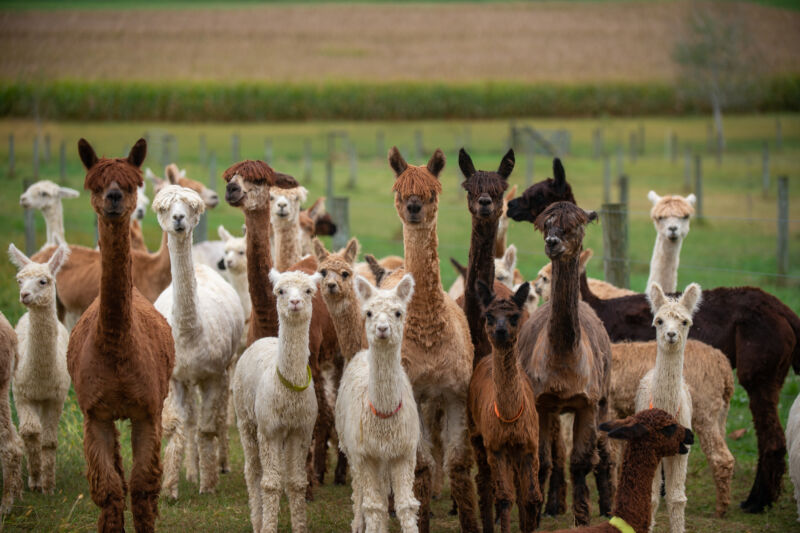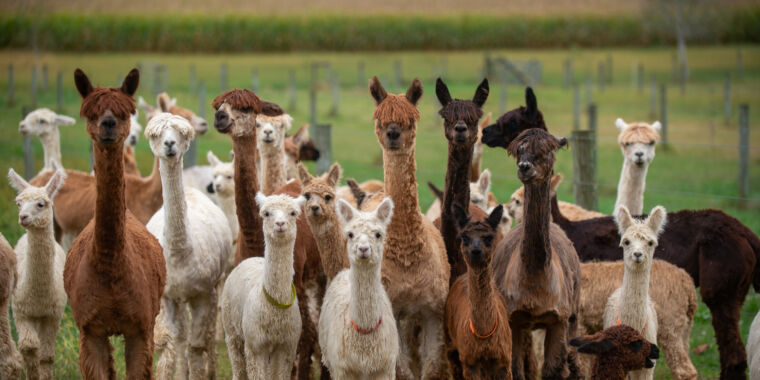Alpacas in Idaho test positive for H5N1 bird flu in another world first

Enlarge / Suri alpacas on a farm in Pennsylvania.
Four backyard alpacas in southern Idaho have tested positive for highly pathogenic avian influenza (HPAI) H5N1, marking the first time bird flu has been detected in members of the fleecy camelid family, according to the US Department of Agriculture.
On Tuesday, the USDA announced that the agency’s National Veterinary Services Laboratories confirmed the infection on a farm in Jerome County on May 16. While the infections are a first for the spitting llama relatives, the USDA said they weren’t particularly surprising. The alpacas were in close contact with HPAI-infected poultry on the farm, which were “depopulated” this month. Of 18 alpacas on the affected farm, only four were found to be infected. There were no deaths documented, according to a report the USDA submitted to the World Organization for Animal Health.
Genomic sequencing indicates that the H5N1 virus infecting the alpacas (B3.13) matches both the virus currently circulating among US dairy cows and the virus that infected birds on the farm.
According to the Alpaca Owners Association, there are over 264,000 alpacas in the US.
The finding does not increase the threat of H5N1 to the general public, but it again highlights the virus’s alarming ability to readily spread to mammals. The USDA has documented hundreds of cases of H5N1 in a wide range of mammals since May 2022, when the outbreak strain began spreading in North America. In March, the USDA announced the unprecedented outbreak among dairy cows. But the agency has found the virus spreading in mink, raccoons, foxes, cats, seals, bears, mountain lions, bottlenose dolphins, goats, and coyotes, among other animals. With each new species and infection, H5N1 gains new opportunities to adapt to better infect and spread among mammals. And as the virus jumps to mammals in close contact with humans, the risk increases that the virus will have the opportunity to adapt to spread among humans.
The USDA and state officials continue to identify H5N1 in dairy herds. According to the latest data on the USDA’s tracking site, at least 66 dairy herds in nine states have been infected.
Alpacas in Idaho test positive for H5N1 bird flu in another world first Read More »
